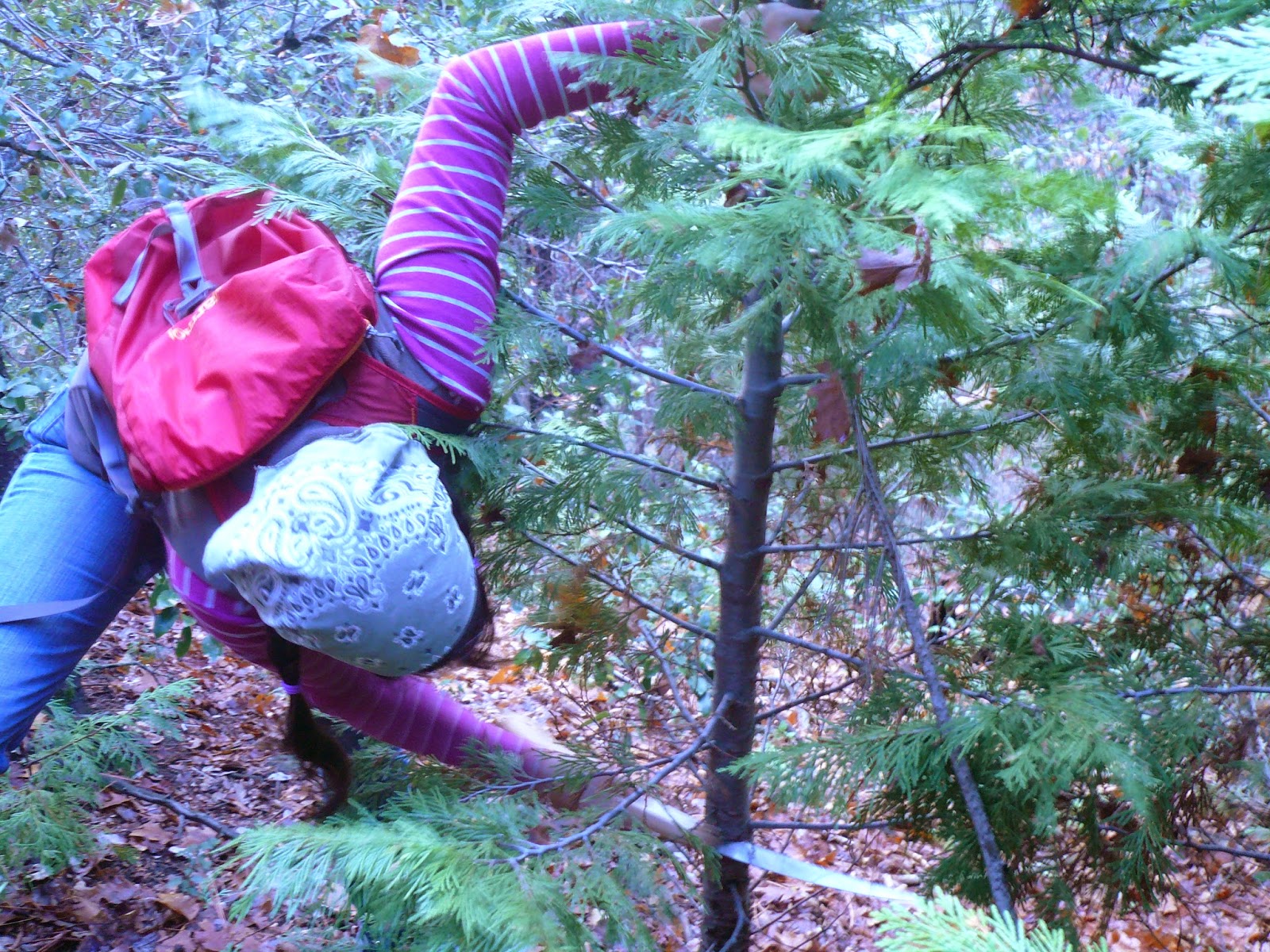Early this winter I headed out with my dog for an underrated local food...acorn!
Acorns are the nuts produced by oak trees which in California are incredibly prolific. Indigenous people have used acorn flour in cooking for millennia. New archaeological evidence suggests that acorn may have made its way into Native American diets as far back as the middle Holocene.
There are two main acorn harvests, one in the summer and one in late fall/early winter after the first big rain.
We headed out after just such a storm and gathered the ripe fruit from a beautiful valley oak.
When selecting acorns for processing, only sound nuts must be gathered. Each nut must be inspected to be sure one is not introducing a burrowing worm into the basket. After all "one bad apple spoils the whole batch."
Bad acorns exhibiting spot and perforation indicative of burrowing worms
Burrowing worm damage
Once the ripe sound acorns have been gathered they are set aside to dry in the shell. In a few weeks they can be cracked with a hammer stone and anvil stone and shelled...don't forget to remove the papery inner sheath!
Next the acorns are pounded (not ground) into flour using a mortar and pestle. I used a large sandstone bowl I fashioned with all stone tools a few years back.
Once the flour is consistent, light, and smooth it must be leached. Leaching is a process whereby poisonous tannins in the nuts are rinsed away with water. This process takes time but it is essential to produce meal that is sweet and non-toxic. The tannins in acorns are not nearly as toxic as say the cyanide in hawthorn pits, but there were a few deaths reported in historic times linked to raw acorn consumption. A group of starving explorers in Humboldt or Mendocino (I can't quite remember) saw the mortars, pestles and acorns left behind by a group of Native Americans who had run when they realized Europeans were near by (likely due to many stories of disease and massacres). The explorers, not knowing that leaching was essential, collected, ground, and consumed massive amounts of the bitter fruit thinking it to be edible in its natural state. Several of these individuals died.
The bottom line is that acorn must be leached! There are two main ways this is done. The first, the traditional method, involved digging a small bowl-shaped depression in the sand next to a stream. The basin was then filled with freshly pounded acorn flour and then water tight baskets would be filled from the stream and slowly poured over the meal effectively leaching the tannic acid into the sand below. After a few hours the purified meal would be carefully scraped into another basket (the lowest layer in the depression would be left alone to minimize sand in the food) and this leached meal could then be dried and used for flour or gruel.
For details on this method as well as the spiritual and functional role of acorn in Graton Miwok and Sierra Miwok traditions please check out "It Will Live Forever" by Bev Ortiz and Julia F. Parker, and amazing book on the subject.
The second method blends the old and the new. Simply add your flour to a large glass vessel, add cold water, stir, and let it settle.
The first time it settles the water will be black with tannins. Pour this off and repeat. Keep the vessel in the refrigerator and pour off the water each day replacing it with fresh water.
Soon the water will become golden, and in a couple of weeks it will be clear...time to dry the tannin-free acorn meal!
For more info on this process please read "Acorns and Eat em" by Suellen Ocean http://www.californiaoaks.org/ExtAssets/acorns_and_eatem.pdf
I followed a bushcraft "recipe" for acorn muffins which produced something more like acorn bricks so I will not repeat it here. I also added a few dried apples from my family orchard. Although the acorn bricks were as dense as energy bars, they were quite tasty and really gave me energy! I won't go into the health benefits of acorn here, but go ahead and do some research on the subject, acorns are jam-packed full of vitamins, protein, and essential oils...truly an underrated food!
When I figure out a better recipe I will post it up. In the meantime maybe you (my readers) can experiment and leave a comment with your results! I have just heard that Chinese markets also sell acorn flour which has prompted me to investigate the use of acorn in Chinese cuisine. I'll keep you posted.
Keep the old ways alive!












































